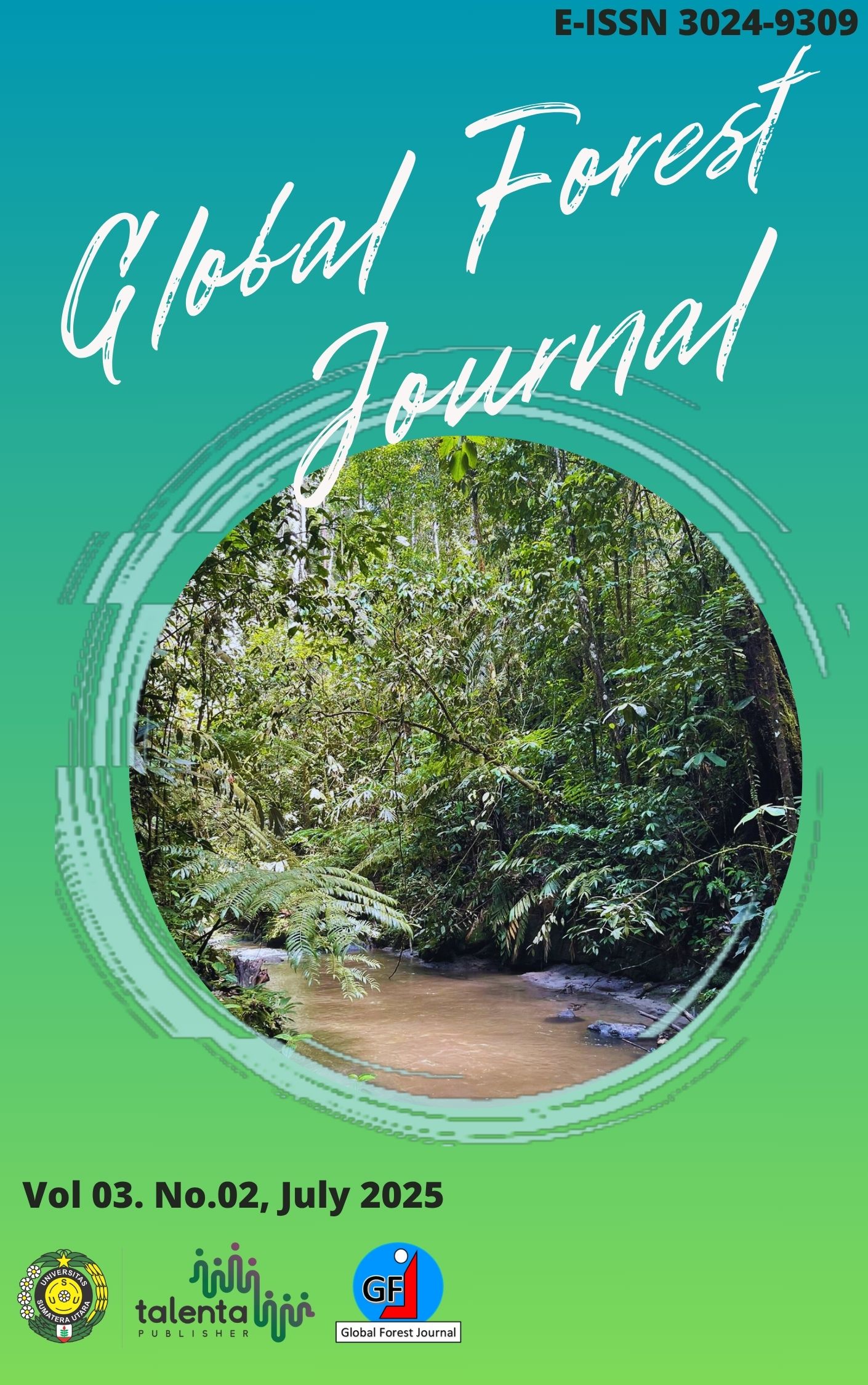Sorghum biomass: A sustainable alternative for particleboard production - A mini review
DOI:
https://doi.org/10.32734/gfj.v3i02.19506Keywords:
Chemical, Durability, Mechanical, Physica, Sorghum BiomassAbstract
particleboard production, offering an eco-friendly alternative to conventional
wood-based composites. This mini-review synthesizes recent research on the
chemical, physical, mechanical, and durability properties of particleboards made
from sorghum residues, including bagasse, stalks, and leaves. Quantitative
findings show that sorghum particleboards can achieve densities ranging from
0.56 to 1.25 g/cm³, modulus of rupture (MOR) up to 34.1 MPa, modulus of
elasticity (MOE) up to 5270 MPa, and internal bond (IB) strength up to 1.92 MPa,
meeting the JIS A5908:2003 Type 8 standard in several cases. Moisture content
(MC) and thickness swelling (TS) can be optimized to meet dimensional stability
requirements through pre-treatment, adhesive formulation, and pressing
conditions. Chemically, sorghum biomass has moderate to high cellulose (30–
46%) and hemicellulose (21–34%) contents, with lower lignin and ash levels than
typical wood, favoring bonding and composite integrity. Synthetic adhesives (UF,
PF, pMDI) and natural alternatives (citric acid, maleic acid, sucrose) have been
explored, with several formulations showing improved water resistance and
biodegradation resistance. Enhanced durability, including termite and fungal
resistance, has been observed, particularly in bio-based adhesive boards.
However, challenges remain in scaling production and standardizing raw material
quality. Future research should prioritize optimizing production methods and
improving sorghum-based particleboards' mechanical and durability properties,
enabling their use in a wider range of applications.
Downloads
Downloads
Published
Issue
Section
License
Copyright (c) 2025 Global Forest Journal

This work is licensed under a Creative Commons Attribution-ShareAlike 4.0 International License.












